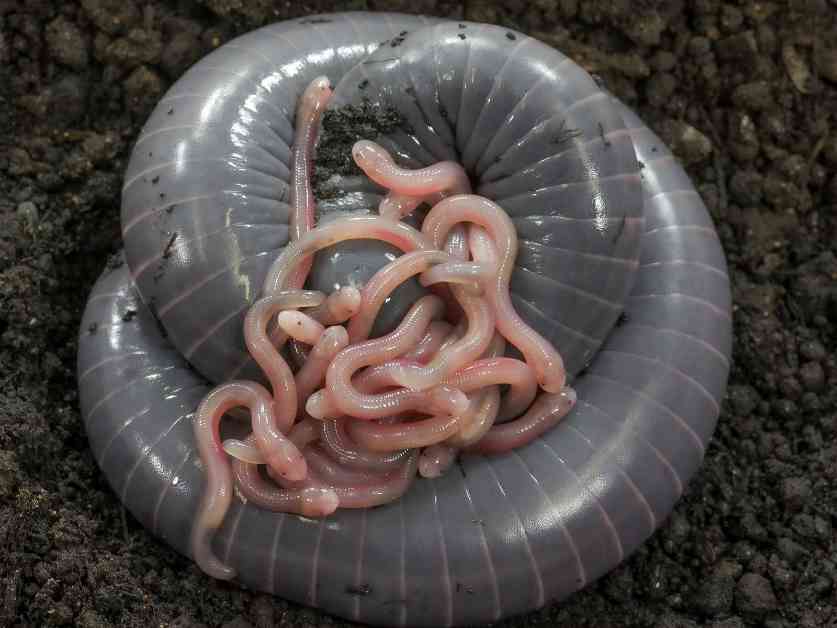Milk is a unique characteristic that is commonly associated with mammals. The very name “mammals” is derived from the term “mammae,” which refers to the chest glands that produce milk. However, as researchers delve deeper into the natural world, they continue to discover instances of non-mammals exhibiting milk-producing behaviors.
One fascinating example of this is the recent discovery made by biologist Carlos Jared and his colleagues at the Butantan Institute in São Paulo, Brazil. They found that females of the worm-like amphibian species Siphonops annulatus produce a fatty fluid, or milk, for their offspring through their cloaca. This method of milk secretion is a result of convergent evolution, showcasing how diverse species can develop similar traits independently.
The behavior of the baby Siphonops annulatus around their mother’s cloaca is intriguing. The offspring eagerly compete for a place near the cloaca, where they feed on the milk released by the mother. This unique form of parental care highlights the diverse ways in which animals nurture their young.
While the concept of non-mammal milk may seem unconventional, it is not entirely unprecedented in the animal kingdom. Birds like pigeons, penguins, and flamingos have been known to produce a milk-like substance to feed their hatchlings. Even invertebrates such as tsetse flies and spiders have evolved their own versions of milk to nourish their offspring.
The evolution of milk-like substances among various species raises questions about the origins and significance of parental care in the animal world. Researchers like entomologist Joshua Benoit suggest that parental care often precedes the development of nutritious substances like milk. Over time, these substances can evolve into alternative forms of milk that support the growth and development of young offspring.
Studying the evolutionary history of milk production presents challenges, as soft tissues that produce milk are rarely preserved in the fossil record. However, researchers are exploring ancient specimens to uncover clues about when different animals began producing milk-like substances. By examining modern milk-producing species and their behaviors, scientists can gain insights into the origins of parental care and milk provisioning.
Ultimately, the discovery of non-mammal milk producers sheds light on the diverse ways in which animals care for their young. From amphibians to insects, the act of providing nourishment and protection to offspring is a universal aspect of the natural world. By appreciating the commonalities in parental care across species, we can gain a deeper understanding of the interconnectedness of life on Earth.

